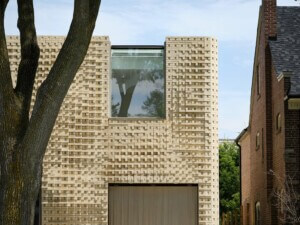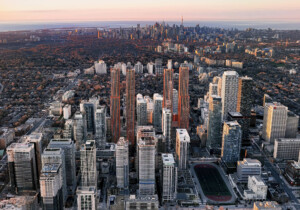Boston Valley Terra Cotta restored the Alberta Legislature Building’s century-old dome using a combination of digital and traditional techniques.
Restoring a century-old terra cotta dome without blueprints would be a painstaking process in any conditions. Add long snowy winters and an aggressive freeze/thaw cycle, and things start to get really interesting. For their reconstruction of the Alberta Legislature Building dome, the craftsmen at Boston Valley Terra Cotta had a lot to think about, from developing a formula for a clay that would stand up to Edmonton’s swings in temperatures, to organizing just-in-time delivery of 18,841 components. Their answer? Technology. Thanks to an ongoing partnership with Omar Khan at the University at Buffalo’s School of Architecture and Planning, the Orchard Park, New York, firm’s employees are as comfortable with computers as they are with hand tools.
On site in Edmonton, technicians took a 3D laser scan of the dome prior to disassembly. They also tagged specific terra cotta pieces to send to New York as samples. These pieces, which ranged from simple blocks to gargoyles and capitals, went straight to the in-house lab for scanning into Rhino. The drafting department combined the overall scan with the individual scans to create a total picture of the dome’s surface geometry and depth.
The individual scans, in addition, were critical to making the approximately 508 unique molds employed on the project. To compensate for the eight percent shrinkage clay goes through during drying and firing, the craftsmen at Boston Valley used to have to perform a series of calculations before building a mold. “[Now we] take the scan data and increase by eight percent by simply doing a mouse click,” said Boston Valley national sales manager Bill Pottle. In some cases, the craftsmen converted the scan data into a tool path for the five-axis CNC machine used to make the molds. “We’re doing that more and more in some of our mold making. It also allows us to ensure that we’re recreating them to the most exacting tolerance and dimensions that we can,” said Pottle.
The data from the 3D scans also helped the craftsmen replicate the dome’s complicated curvature. “Between the scanned pieces and the scan of the dome itself, we were able to figure out some very complex geometry where each of these individual pieces had the correct shape to them,” said Pottle.
- Facade Manufacturer Boston Valley Terra Cotta
- Architects Boston Valley Terra Cotta, Allan Merrick Jeffers, Richard Blakey
- Location Edmonton, Alberta, Canada
- Date of Completion November 2013
- System terra cotta rain screen
For sustainability and durability, the designers at Boston Valley reconfigured the dome as a rain screen system, with terra cotta components attached to a stainless steel frame. But while the rain screen boosts environmental performance, it also demands incredible precision. Again, the 3D models proved invaluable. “The models allowed these tight tolerances. [We] could explode it and make sure everything was connected. It would have been impossible without that level of sophisticated software,” said president John Krouse.
The Alberta Legislature Building dome restoration is the first major project on which Boston Valley has unleashed its full array of digital design tools. Krouse hopes its success—he estimates that the digital tools speeded fabrication by 200 percent—will send a message to designers interested in experimenting with terra cotta: “What we’re trying to say to the architecture and design community globally is don’t be afraid to start designing domes with complex geometry, because we’re equipped with all this technology. It doesn’t have to be a square box.”










